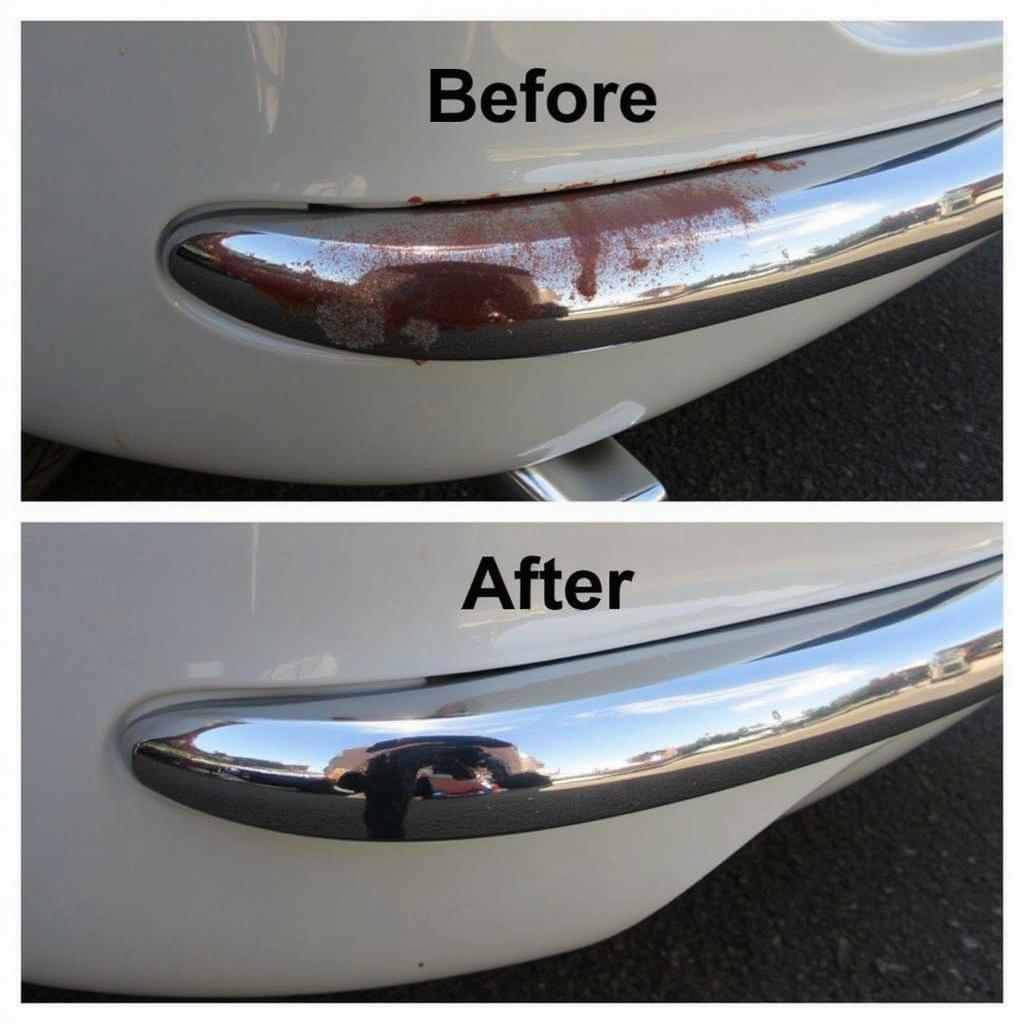Car trim detailing is often overlooked, yet it plays a crucial role in your car’s overall appearance and value. Knowing what to detail on your car’s trim can make a significant difference in achieving a truly showroom-worthy finish. This guide will delve into the intricacies of car trim detailing, covering everything from identifying different trim materials to choosing the right products and techniques for a professional-level result.
Understanding Your Car Trim Materials
Before you begin detailing your car trim, it’s vital to identify the materials used. Different materials require different cleaning and restoration techniques. Common car trim materials include plastic, vinyl, rubber, chrome, and carbon fiber. Knowing the specific type of material allows you to choose the right products and avoid causing damage. For instance, harsh chemicals can damage or discolor certain plastics, while abrasive cleaners can scratch delicate chrome finishes.
Cleaning Car Trim: The Essential First Step
Cleaning your car trim is the foundation of any detailing process. Start by washing the trim with a dedicated car wash soap and a microfiber wash mitt. This will remove loose dirt, grime, and road film. For stubborn stains or bug residue, consider using a dedicated trim cleaner. Always test the cleaner on an inconspicuous area first to ensure it doesn’t damage the trim.
Restoring Faded and Discolored Trim
Over time, exposure to the elements can cause car trim to fade and discolor. UV rays from the sun are a major culprit, breaking down the pigments in the trim and leading to a dull, lifeless appearance. Restoring faded trim requires specialized products called trim restorers. These products contain UV protectants and restoring agents that help to revive the color and protect the trim from further damage.
Protecting Your Car Trim: Long-Term Care
After cleaning and restoring your car trim, it’s important to protect it from future damage. Applying a trim protectant creates a barrier against UV rays, dirt, and grime. This helps to maintain the trim’s appearance and prolong its lifespan. There are various types of trim protectants available, including sprays, gels, and pastes. Choose a product that suits your needs and preferences.
Detailing Specific Trim Types: Targeted Approaches
Each type of car trim requires a slightly different approach. For example, chrome trim benefits from a dedicated chrome polish to remove water spots and restore shine. Rubber seals and gaskets require specialized rubber conditioners to prevent drying and cracking. Understanding these nuances will help you achieve the best results. Similarly, detailing older, peeling rubber window trim requires a specific approach, involving cleaning, prepping, and potentially repainting or replacing the trim for a truly revitalized look. The cost of mobile car detailing can vary, but understanding what’s involved in the detailing process – from trim restoration to paint correction – helps you appreciate the value of a professional service. If you are considering professional detailing options, you may wonder if companies like Firestone offer car detailing services. Knowing what to expect from your trim detailing can lead to the most satisfactory results.
 Detailing Chrome Car Trim
Detailing Chrome Car Trim
Conclusion
Detailing your car trim is an essential part of maintaining your car’s overall appearance and value. By understanding what to detail on your car trim and following the appropriate techniques, you can achieve a professional-level finish and protect your investment for years to come. Regular car trim detailing is a worthwhile investment that can significantly enhance your driving experience.
FAQs
- How often should I detail my car trim? Ideally, every 3-6 months, depending on environmental exposure.
- Can I use household cleaners on my car trim? It’s best to avoid household cleaners as they can damage certain trim materials.
- What’s the best way to remove bugs from car trim? Use a dedicated bug and tar remover followed by a thorough wash.
- How can I prevent my car trim from fading? Applying a UV protectant regularly helps prevent fading.
- What’s the difference between a trim cleaner and a trim restorer? A cleaner removes dirt and grime, while a restorer revives faded and discolored trim.
- How do I detail black trim on my car to maintain its deep color and prevent fading? Specialized products designed for black trim offer UV protection and restoration properties.
- What’s the best approach for detailing old rubber window trim that is peeling or cracking on my car? This might involve repairs, repainting, or replacement depending on the severity of the damage.
For further information on detailing black car trim, or understanding what a full car detail entails, check out our guides: how to detail black trim on car, what does detailing a car entail. You can also find resources on how to detail old rubber window trim peeling cracking car and how much is a mobile car detail. Lastly, if you are looking for professional car detailing services, you can find out does firestone do car detailing.
Need expert assistance with your car detailing? Contact us via WhatsApp: +1(641)206-8880 or Email: [email protected]. Our 24/7 customer service team is ready to help.

Leave a Reply